Articles
- Page Path
- HOME > Korean J Community Nutr > Volume 16(4); 2011 > Article
-
Original Article
- Korean and Chinese University Students' Importance and Performance Analysis for Quality Attributes by Coffee Type in Daejeon
- Hye-Young Kim, Hye-Kyung Chung, Hae-Young Lee
-
Korean Journal of Community Nutrition 2011;16(4):511-524.
DOI: https://doi.org/10.5720/kjcn.2011.16.4.511
Published online: August 31, 2011
Graduate School of Education, The Catholic University of Korea, Bucheon, Korea.
1Department of Nutrition Services, Gangnam Severance Hospital, Yonsei University College of Medicine, Seoul, Korea.
2Department of Food and Nutrition, Sangji University, Wonju, Korea.
- Corresponding author: Hae-Young Lee, Department of Food and Nutrition, Sangji University, 660 Woosan-dong, Wonju 220-702, Korea. Tel: (033) 730-0492, Fax: (033) 738-7740, hy1317@sangji.ac.kr
Copyright © 2011 The Korean Society of Community Nutrition
- 1,543 Views
- 4 Download
- 10 Crossref
Figure & Data
REFERENCES
Citations

- The Allure of Foreignness: Exploring the Impact of Foreign Language Labels and the Mediating Effects of Consumer Xenocentrism on Consumer Perceptions
Erion Shehu, Ralf Vollmann, Azin Taban, Gentjan Cera, Enxhi Shehu
Journal of International Consumer Marketing.2026; 38(1): 56. CrossRef - Influence of Language of Packaging Labels on Consumers’ Buying Preferences
Han-Chiang Ho, Candy Lim Chiu, Dai Jiang, Jiale Shen, Hong Xu
Journal of Food Products Marketing.2019; 25(4): 435. CrossRef - Health-related Factors and Nutritional Status in Shift-workers at Coffee Shops - Focused on Single Women in Twenties in Seoul -
Seung-Lim Lee, Soo-Jin Kim
Korean Journal of Community Nutrition.2013; 18(5): 467. CrossRef - Importance-Performance Analysis of Quality Attributes of Coffee Shops and a Comparison of Coffee Shop Visits between Koreans and Mongolians
Mi-Na Jo, Bolorerdene Purevsuren
Journal of the Korean Society of Food Science and Nutrition.2013; 42(9): 1499. CrossRef - IPA Analysis according to the Attributes of the Franchise Coffee Shop Selection of College Students in Busan
Kyung-Hee Kim
Journal of the Korean Society of Food Culture.2013; 28(2): 195. CrossRef - Analysis of University Student' Perception of Coffee Shop Prices through Price Sensitivity Measurements
Hyun-Ah Kim
Journal of the Korean Society of Food Science and Nutrition.2012; 41(8): 1182. CrossRef - A Study on the Differences in Dietary Satisfaction with Age in North Korean Refugees
Eun-Jung Lee, Yong-Qin Pei
Journal of the Korean Society of Food Culture.2012; 27(6): 636. CrossRef - Survey on Consumption of Coffee Beverages and Energy Contribution Ratios of Coffee Beverages and Accompanying Snacks by College Students in Daejeon City and Chungnam Province in Korea
Young-Hee Lim, Sun-Hyo Kim
Journal of the Korean Society of Food Culture.2012; 27(3): 240. CrossRef - Changes in Food and Nutrient Intakes of College Students between 1999 and 2009
Han Byul Jang, Hwa Young Lee, Young-Hee Han, Jeehye Song, Ki Nam Kim, Taisun Hyun
Korean Journal of Community Nutrition.2011; 16(3): 324. CrossRef - The Antecedents of Coffee Satisfaction by Lifestyle Segments for Korean and Chinese University Students in Korea
Hye-Kyung Chung, Hye-Young Kim, Hae-Young Lee
Korean Journal of Community Nutrition.2011; 16(6): 782. CrossRef
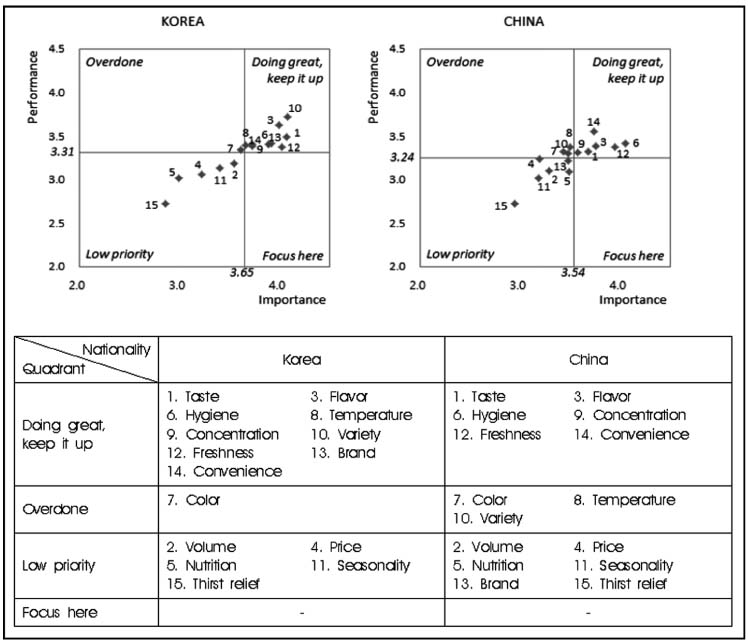
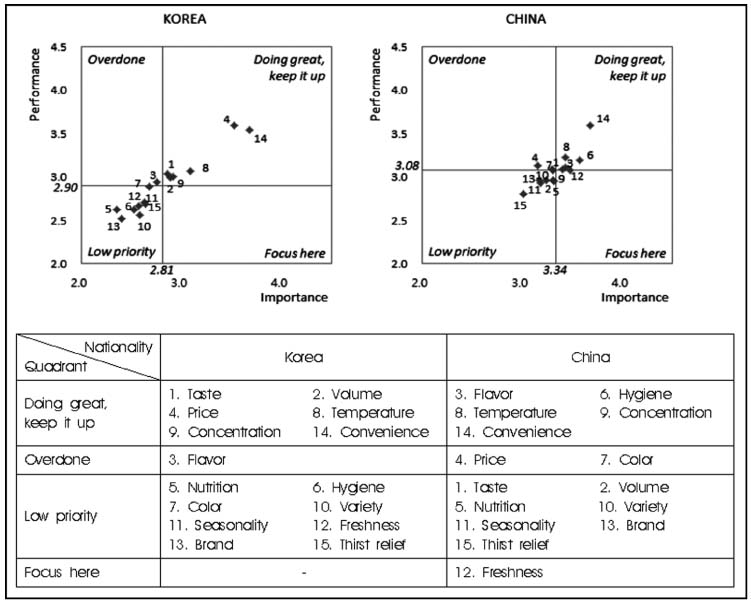
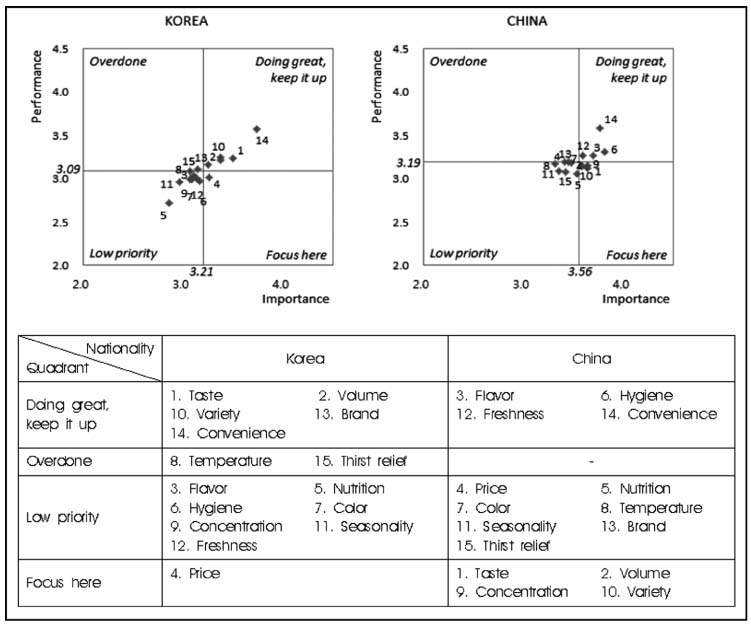
Fig. 1
Fig. 2
Fig. 3
General characteristics of respondents
1) N (valid %)
2) Mean ± SD
The consumption toward coffee
1) N (%)
*: p < 0.05 **: p < 0.01
Importance and performance for quality attribute of coffee in Korean and Chinese university students
1) Likert-type 5 point scale : 1 = very low, 3 = so-so, 5 = very high, 2) Mean ± SD, *: p < 0.05 **: p < 0.01 ***: p < 0.001
Importance and performance for quality attribute of coffee according to gender in Korean university students
1) Likert-type 5 point scale : 1 = very low, 3 = so-so, 5 = very high, 2) Mean ± SD, *: p < 0.05 **: p < 0.01
Importance and performance for quality attribute of coffee according to gender in Chinese university students
1) Likert-type 5 point scale : 1 = very low, 3 = so-so, 5 = very high, 2) Mean ± SD, *: p < 0.05
1) N (valid %) 2) Mean ± SD
1) N (%) *: p < 0.05 **: p < 0.01
1) Likert-type 5 point scale : 1 = very low, 3 = so-so, 5 = very high, 2) Mean ± SD, *: p < 0.05 **: p < 0.01 ***: p < 0.001
1) Likert-type 5 point scale : 1 = very low, 3 = so-so, 5 = very high, 2) Mean ± SD, *: p < 0.05 **: p < 0.01
1) Likert-type 5 point scale : 1 = very low, 3 = so-so, 5 = very high, 2) Mean ± SD, *: p < 0.05

 KSCN
KSCN



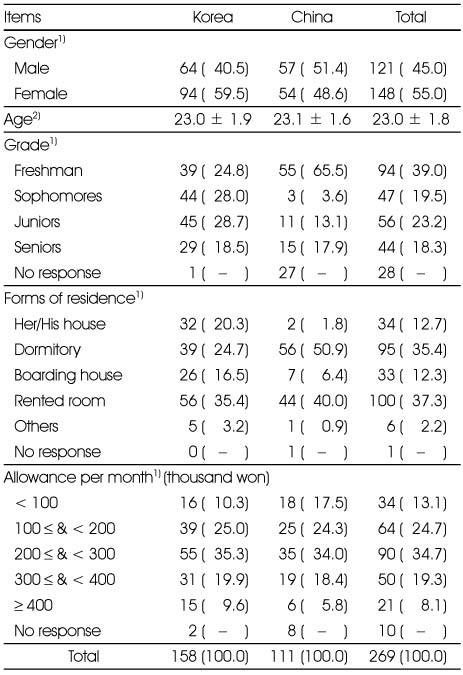

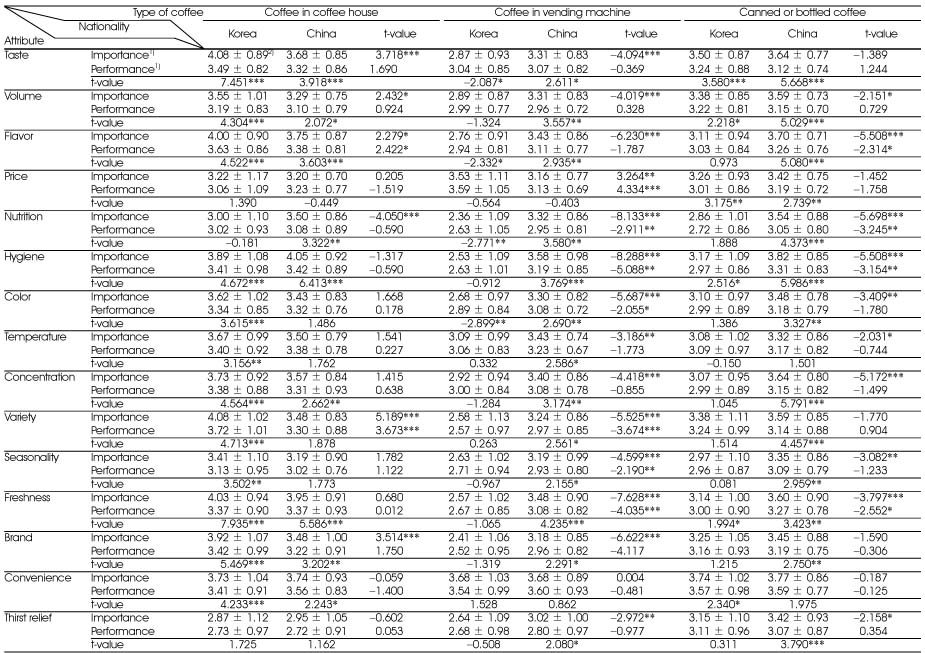
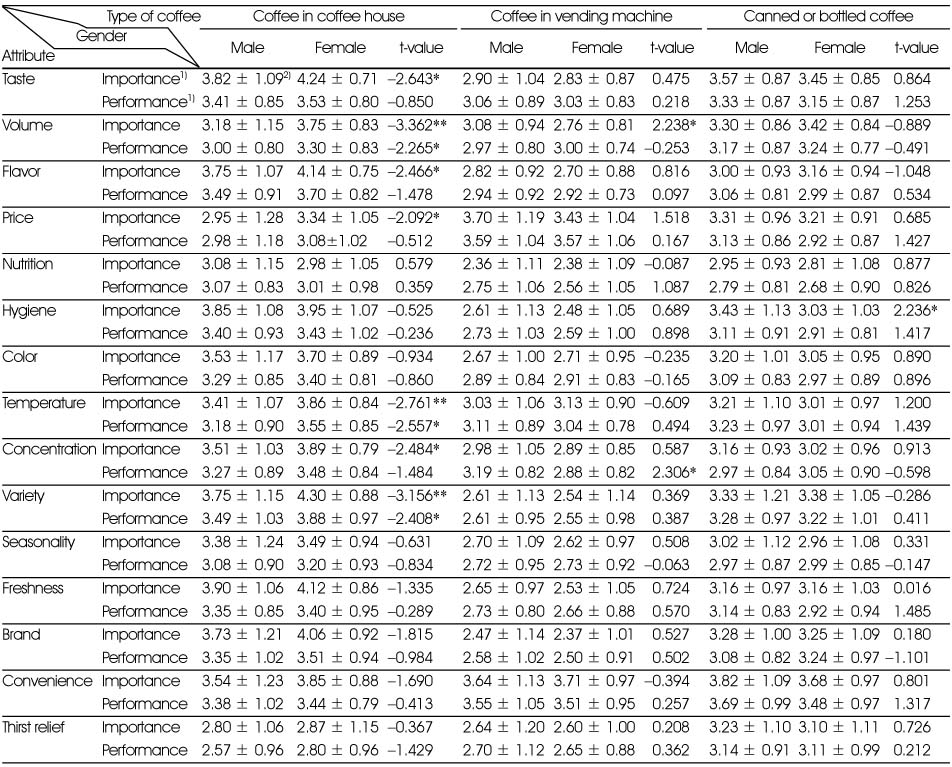
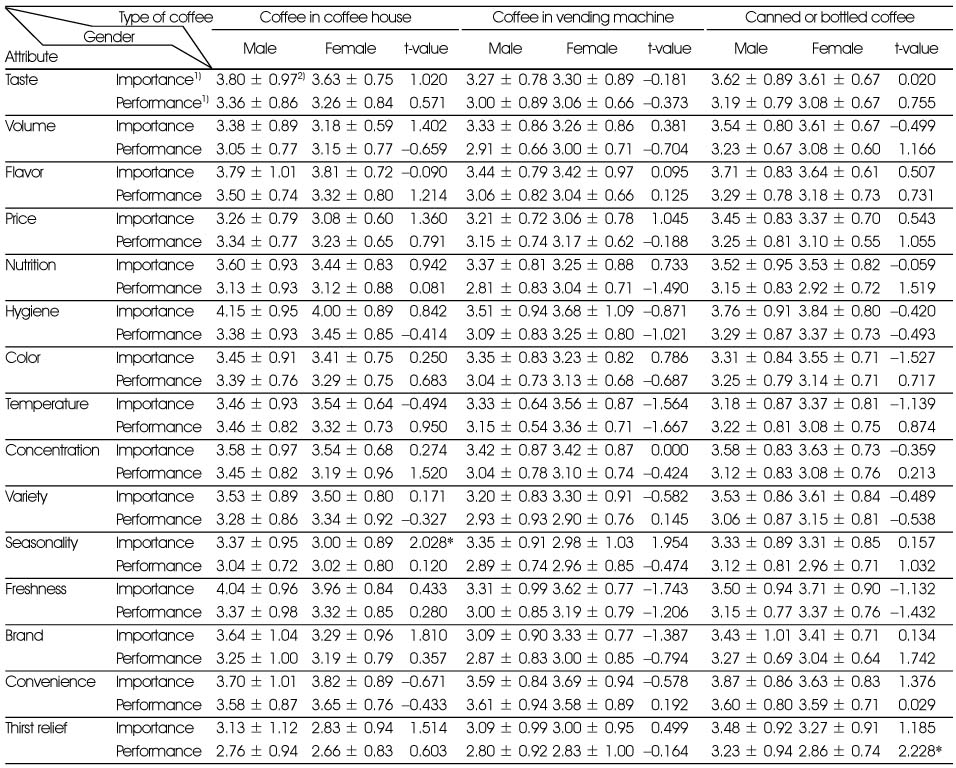
 Cite
Cite


